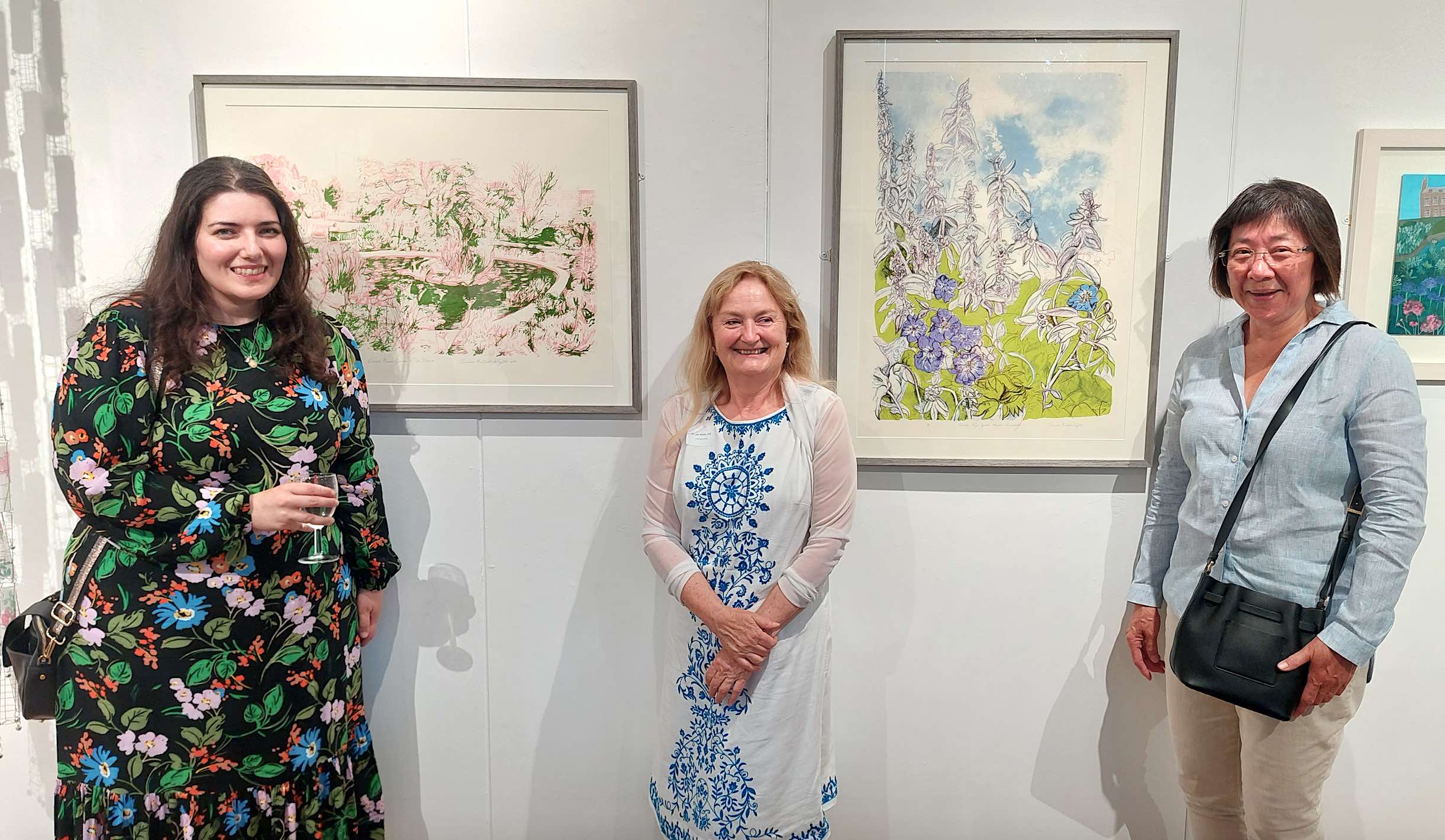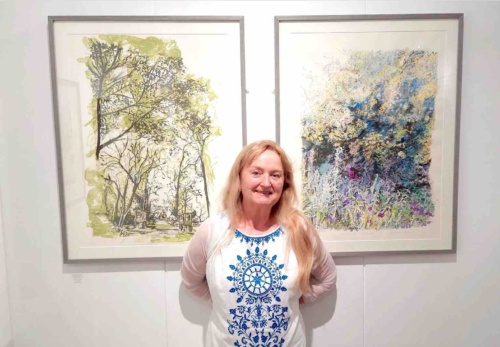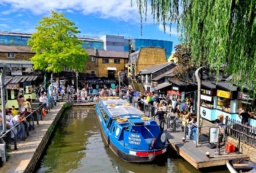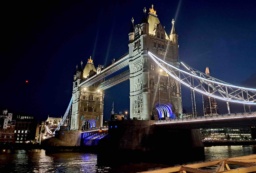Chelsea Physic Garden: Celebrating 350 Years in Paint and Print Exhibition
Denise Ballard-Wyllie’s artist residency at the Chelsea Physic Garden was a horticultural match made in heaven. In this interview, she shares how her painter-printmaker practice suffuses her love of nature – hence, the expressively refashioned landscapes that often feature in her work. A practice that offers reflections on sojourns to such nature spots, through a striking constituency of imagery.
She also discusses creative approaches to her residency and participation in the Chelsea Physic Garden: Celebrating 350 Years in Paint and Print group show at the Bankside Gallery, with other Royal Society of Painter-Printmaker artists. And considering the garden’s enduring position as a medicinal garden, does she believe in the healing forces of nature, herself?
 Denise Wyllie and Chelsea Physic Garden staff
Denise Wyllie and Chelsea Physic Garden staff
Congratulations on being selected as Chelsea Physic Garden’s artist-in-residence. For our readers unfamiliar with such an appointment please tell us what that involves.
This year is the garden’s 350th anniversary so there will be lots of celebrations marking the event, including this exhibition at the Bankside Gallery, June 8-25. Some artists from the Royal Society of Painters-Printmakers (RE) are showing their work, including myself. Earlier in the year, the RE informed me I had been selected to take part in the 2023 residency at the Chelsea Physic Garden and that my work will be exhibited at the Bankside as part of the garden’s anniversary celebrations.
What are the garden’s unique features and how will they be depicted in your work? Have you sketched these blueprint ideas yet? If not, what will your approach be?
This garden has many unique aspects. It’s like a living encyclopedia of medicinal plants some of which are rooted in theories of medicine that we no longer ascribe to. The garden is arranged in areas according to genus, countries and remedies for specific diseases such as cancer and Covid-19. What fascinates me most about the garden is its architectural aesthetic. There are willow arches, ponds, sculptures and architectural features that are amazing to look at. Also, exotic plants that you don’t expect to see in London.
There are educational aspects to the garden – it informs you about collectors and botanists as well as the well-known medicinal aspect. As regards my work, I had the opportunity to focus on these botanists, the historical aspect or elements around the plants themselves such as colour or light play. I had many ideas and had to hone them down to produce six prints that represent some aspect of this garden. At first, I was just soaking up the atmosphere, getting a feel for the place, painting the light-play and making fanciful sketches from rudimentary thoughts and ideas. The notebook I use has disparate information; the smaller paintings seem to group together but the sketchbook has many ideas I dipped into.
What processes and techniques did you employ?
I produced paintings and drawings on location. I began by studying some of the plants in detail. These weren’t neat botanical drawings but depicted as seen in the garden in their natural way. Eventually, I translated them into handmade silkscreen prints.
Has nature, in general, and London’s nature spots, in particular, played an important part in your creative output?
Myddleton House Gardens is on the outskirts of London and has played an important part, in this respect. It has enabled me to work quietly and privately all year round while soaking up the presence of nature and allowing me to focus on and enjoy all the seasons, light-play, and the emotional and physical experience of being in nature. This garden was once a specialist place that had unique plants of interest to botanists. Now it’s advertised as a playground for children and families and is not so much of a haven but the changed purpose allows it to be enjoyed differently.
Has any magnum opus nature work emerged from this approach?
Absolutely. There have been some very significant places and times, as regards London gardens. There’s a place in Myddleton House Gardens called the Lunatic Asylum. It has very unusual plants like green roses and twisted hazel – unique and fascinating plants. There’s also a claret-coloured vine that I discovered in a pergola and I made a significantly large pastel drawing of it in autumn. The leaves are a really deep claret wine colour. The light in other areas is a very vibrant pale green.
On the whole, it’s a very dark picture but, at first, I wasn’t happy with it and went back there the following year and reworked the whole thing. That picture is a strong example of the type of work I was trying to show and relates to my feelings at the time.
A famous medical study found that hospital patients healed twice as faster when they had access to a hospital garden – no extra medicine needed. Do you believe in the healing powers of nature and does it revive and drive your own creative processes in a similar way?
I’d say, throughout my life, I have tried to come to terms with certain aspects of my own nature and understand aspects of myself. Like everyone else, I have gone through periods of loss of loved ones and sadness and had great comfort in putting my external thoughts aside to focus on how I reconnect with nature and how nature seems to give something back during these periods when I am drawing and painting nature.





